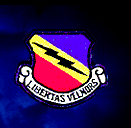| CHAPTER 30
KILLER SCOUTSTwenty-three days into Operation Desert
Storm, allied pilots had passed the 52,000-sortie mark. Twenty-eight allied planes were lost, twenty-one in combat; thirty members of the coalition were killed in action, including twelve Americans; forty-three coalition members were now missing in action, including twenty-five Americans; and the Iraqis captured twelve prisoners of war, a number that included eight Americans. Gen. Robert Johnston, chief of staff for U.S. Central Command, announced that 135 Iraqi aircraft
had been destroyed, and a total of 147 had fled to Iran. Allied aircraft destroyed 600 out of 5,700 tanks, and 400 out of 3,200 artillery pieces. Approximately 885 Iraqi prisoners
had been captured. The most impressive statistic had to do with the number of Scud launches initiated by Iraq. During the first week of fighting, thirty-five Scud missiles were launched toward Israel and Saudi Arabia. During the second week, after the Werewolves joined the A-10s and the F-15Es in the search for mobile launchers, the number of launches dropped to eighteen. Since the 69th TFS
had been transferred permanently to King Fahd AB eleven days before, only six Scuds were fired.After dinner, Raj and I
joined the other members of our MPC team in the squadron planning room to discuss the Killer Scout program. In preparation for the ground war, CENTAF planners had developed a grid of "kill boxes" that covered the southern half of Iraq, Kuwait, and northeastern Saudi Arabia. Each kill box was 30 by 26 miles; six boxes covered an area from Kuwait City to the confluence of the Tigris and Euphrates rivers. The Pointers, as the paired Killer Scouts were called, worked the kill boxes together, flying between 15,000 and 20,000 feet to avoid SAMs and AAA. The missions lasted about four and a half hours and required as many as five
air-refuelings. To help spot targets along the desert floor, each flight lead was equipped with binoculars. When a target was found, the pilots either bombed it or performed a "fix," in which the coordinates were passed along to other allied aircraft so they could drop their bombs on it.
| |



